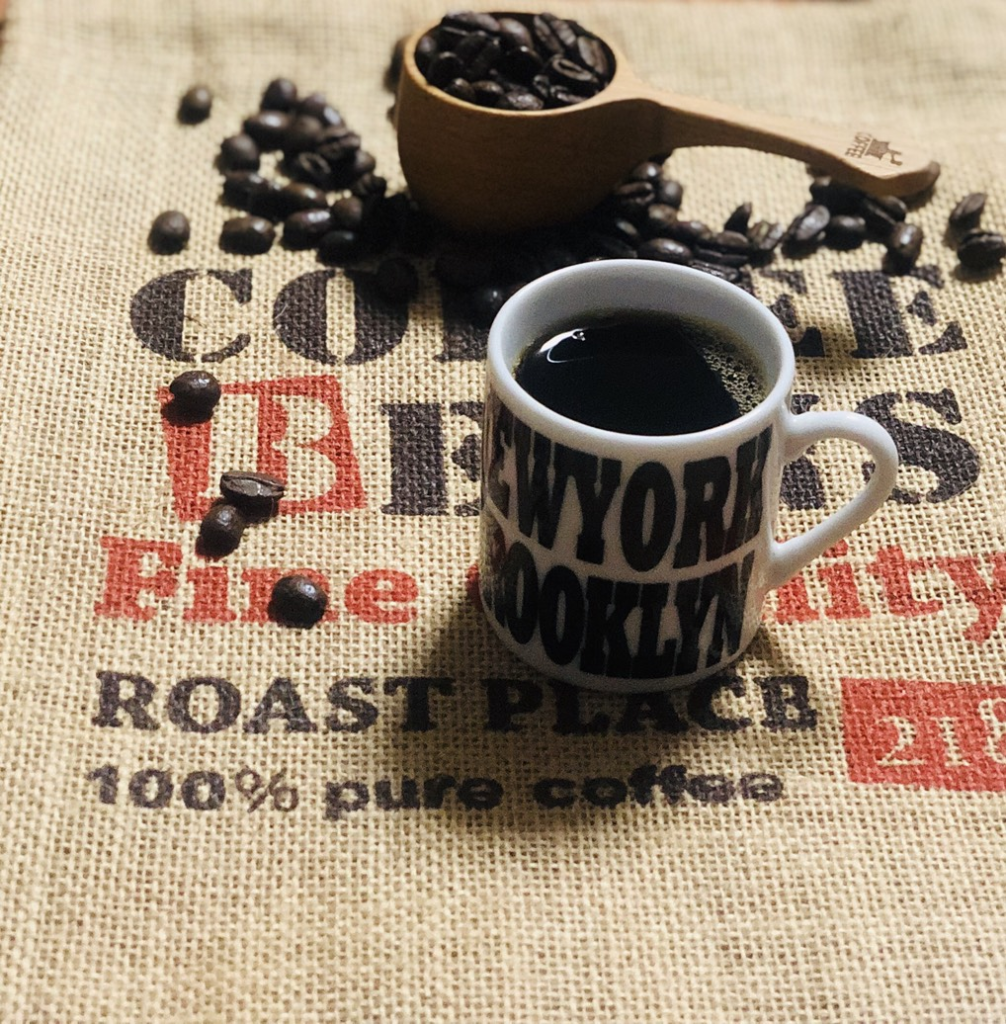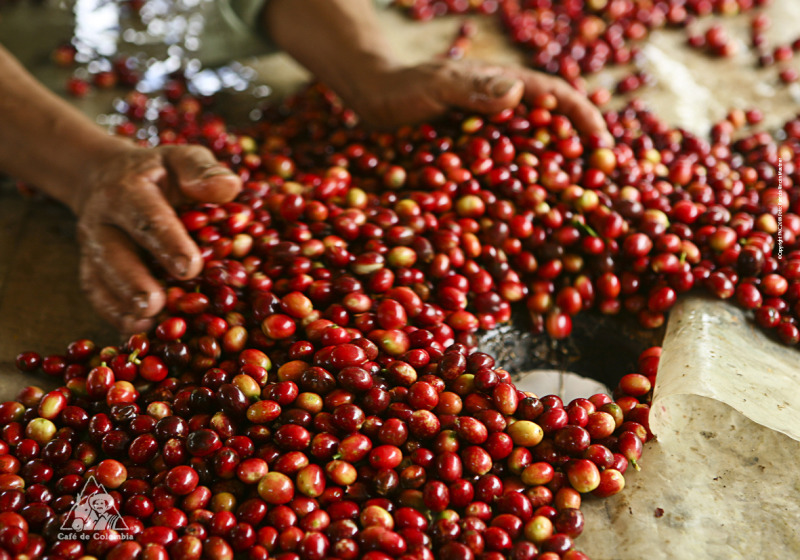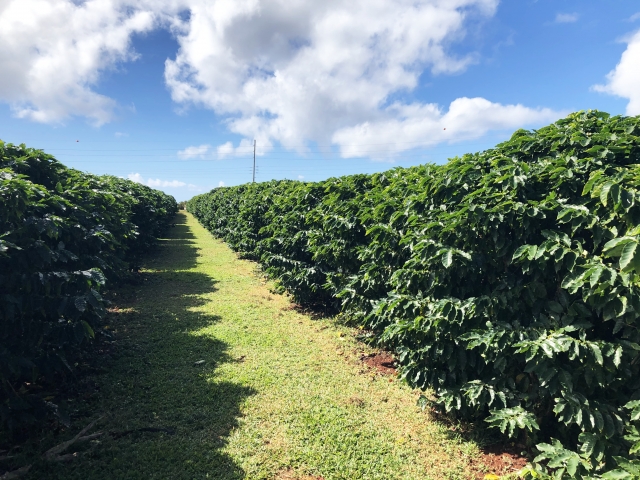
By learning about the history, origin, and coffee rust disease, readers may have a change in their feelings towards coffee.
Learn about the origin of coffee.
Firstly, let’s introduce an episode that many of you may already know about: The Legend of Kaldi at Kaldi’s Coffee.
Kaldi, an Arabian goat herder, lived a pastoral life in the grasslands of Ethiopia. One day, his goats were jumping and frolicking around. When he investigated, he discovered that they were eating red fruits growing on a tree nearby. Curious, he tried some himself and felt an indescribable sense of refreshment. Kaldi and his goats happily continued to eat the fruits and work.
One day, a passing Islamic monk saw Kaldi and his goats and was amazed by the miraculous power of the red fruits. He brought them back to his monastery and shared them with his fellow monks.
Since then, everyone was enchanted by the sweet and sour deliciousness of the red fruits, as well as the refreshing feeling it gave them. It became a secret favorite as the “magic beans.”
There are many stories about the origins of coffee, but it seems to have spread as a remedy for drowsiness among Islamic monks.
The legend of Kaldi is also familiar to us in more everyday settings. Have you ever stopped by KALDI at AEON MALL?
KALDI handles a wide range of products from various countries, such as seasonings, sweets, and alcoholic beverages, but it is primarily a coffee shop. They sell coffee beans at the cash register, which are roasted in their own factory.
If you purchase coffee beans here, the legend of Kaldi is described on the back of the coffee bean bag.
Note: AEON MALL is a shopping mall chain in Japan.
hthttps://www.kaldi.co.jp/tps://www.kaldi.co.jp/
The theory of coffee originating in Ethiopia seems to be the strongest, but there is another famous legend known as the Legend of Sheikh Omar.
According to this legend, a Muslim was falsely accused and discovered a red fruit that was being pecked at by a small bird. Upon trying the fruit, he felt invigorated. Eventually, he boiled the fruit to make a brew and was able to cure sick people, earning him a pardon for his crimes.
The story takes place in Yemen, which is located across from Ethiopia.
Reasons for Ethiopia’s Strong Claim of Origin
Ethiopia and Yemen are located facing each other across the Gulf of Aden, and the representative coffee known as “Mocha” uses coffee beans from both countries. Although you may be familiar with “Cafe Mocha,” it is a completely different drink. “Mocha coffee” is the correct term, and it uses Mocha beans. The term “Mocha” refers to coffee beans from both Ethiopia and Yemen. In recent years, it has been further divided into single-origin countries, single brands, and even single farms, with terms such as “specialty coffee” and “third-wave coffee.” In Ethiopia, there are Sidamo and Yirgacheffe, which are also called Mocha Sidamo and Mocha Yirgacheffe. In Yemen, there is Matari, also called Mocha Matari.
Why are they both called Mocha?
The tree that produces coffee beans is called a coffee tree. It is said that the origin of this coffee tree is Ethiopia and it crossed over to Yemen, located on the opposite bank, and spread from its port to the rest of the world.
In the Yemeni-origin theory, the part about it crossing over from Ethiopia is missing.
If you would like to know more in detail, please refer to the following resources:⇩
https://www.ucc.co.jp/enjoy/encyclopedia/history/index.html
And then, the coffee beans harvested in Ethiopia and Yemen were gathered at the port, where the two countries’ coffee beans mixed together and were exported to various countries around the world under the name “Mocha”. Even today, if you see the label “Mocha”, it can be assumed that it is a blend of coffee beans from both countries.
When it comes to Ethiopia’s Mocha and Yemen’s Mattari, they are individual types of coffee. However, in the case of Brazil, the world’s largest coffee-producing country, a similar phenomenon exists even today.
Also, the familiar names “Brazil Santos No.2” and “Brazil” come to mind. In the case of “Brazil Santos No.2,” it refers to the highest quality beans that were harvested throughout Brazil and shipped from Santos port.
In the case of Brazil, the phenomenon is similar even in modern times. Brazil is the world’s largest coffee producing country. In the case of Brazil Santos NO.2, it refers to the highest quality beans shipped from the Santos port, which were harvested throughout Brazil. In other words, Brazil refers to beans shipped from ports other than Santos. Only beans shipped from Santos can be called Brazil Santos. The highest quality rank is NO.2, and there is no NO.1 rank. Ranks are divided from NO.2 to NO.8. In other words, the beans from all over Brazil are gathered, and depending on the port of shipment, it is divided into Brazil or Santos. The coffee beans themselves are the same.
Well, nowadays coffee names can be complex and confusing due to the increasing level of detail, including even the individual farm names. But that’s a topic for another article, I suppose.

The history of coffee leaf rust and Arabica varieties.
The greatest threat to coffee in its history was the coffee rust disease affecting coffee trees, and the history of the Arabica species. Coffee rust disease is the most significant disease affecting coffee trees, and it is the reason why coffee trees were at risk of extinction during the history of coffee.
Coffee beans are grown and harvested mainly in countries near the equator known as the “Coffee Belt”. The coffee plant is tropical and develops alkaloid drugs such as caffeine and cocaine to protect itself from diseases and predators in the hot and humid environment.
Around 1867 to 1868, the coffee rust disease, which had a major outbreak, devastated coffee plantations. To make a living, the plantation owners gave up coffee cultivation and switched to growing tea.
The key person behind this was Thomas Lipton, who started his journey from Ceylon (now Sri Lanka). The tea shops that also deal with coffee inherited this history.
Furthermore, it arrived in Java and Sumatra, Indonesia in 1876. A large outbreak occurred in Indonesia in 1908. It was also confirmed in New Caledonia, Ponerihouen, Canala, and Thio. The way in which coffee rust was introduced is unknown.
Coffee leaf rust, in 1910, caused irreparable damage to the farms in the Haparanda Islands. If it were to spread to the island of Grande-Terre, it would have a devastating impact on coffee production. The feared situation became a reality a few years later.
The coffee leaf rust, which spread throughout the entire island, mercilessly attacked coffee trees and repeatedly caused destruction. Prior to this tragedy, the production that had reached 500 tons was reduced to 200 tons. It was a period of darkness that lasted for about 15 years.
The Arabica variety is known for its high quality, with a rich flavor and aroma, and is also susceptible to the devastating effects of coffee rust due to its lack of resistance to the disease.
And in New Caledonia, they introduced the Robusta variety, which has complete resistance to this coffee rust disease.
The taste, aroma, and quality of the Robusta species are inferior to those of the Arabica species. However, due to its complete resistance to coffee rust, the plantation owners who attempted to rebuild relied on the production of the remaining Arabica and Robusta species.
The origin of the word “Robusta” is from the word “Robust,” which means “strong and sturdy.”
In addition to its disease resistance, the Robusta variety is also easy to cultivate because it can grow at elevations from 0m to 1000m, even in low-lying areas. It is truly a savior, wouldn’t you say?
Without the Robusta variety, I might not even be writing this blog post now, come to think of it.
Although it is technically correct that the Kanephora variety came before the Robusta variety, the latter is more widely recognized.
As a result of this, the Robusta variety, which spread to various countries around the world, is not as widely cultivated in recent years due to its inferior quality and taste. It is mainly grown in Indonesia and Vietnam.
It is common to add condensed milk to Vietnamese coffee, which goes well with Robusta coffee, so they say.
The characteristic of Robusta coffee is its strong aroma and bitterness, which makes it a good accent for blended coffee. It is also good for a taste like iced coffee.
Recently, there are also high-quality Robusta coffee beans available, and they are even used for decaf coffee, so it might be the revolution era for Robusta.
The region managed to overcome the crisis of extinction, but in the shadow of it, the Lurioa variety disappeared completely.
With the help of the robusta variety, coffee cultivation in New Caledonia was saved and production recovered to around 600 tons, ushering in a golden age!

And finally, let’s introduce the history of the Liberica variety.
What is Liberica coffee?
It is a hybrid species, similar to what we call in modern times.
Libérica variety is a hybrid of Arabica and Robusta, incorporating the positive characteristics of both.
It is a hybrid variety that incorporates the qualities of the previously mentioned Arabica and Robusta varieties. It is resistant to coffee leaf rust disease and has a quality of flavor and aroma that is not as high as Arabica but not as low as Robusta. It is a variety that is positioned in the middle. However, since it is not widely distributed, it falls into a category with low recognition.
The discovery of the Liberica variety dates back to the end of the 19th century. At first, it was consumed only in its country of origin, but gradually became known in other countries as well. Recently, there has been a movement to increase the production of Liberica.
The Liberica variety is cultivated in moderate conditions, with moderate elevation and not so strict requirements for temperature and humidity. However, it does not have complete resistance to coffee rust disease like the Robusta variety. It originated in Liberia, Africa, but nowadays it is hardly cultivated.
The Philippines is now famous for its coffee production, but it has experienced a major blow to its production due to the spread of coffee rust. It was once said to be one of the world’s leading coffee-producing countries.
Nowadays, the Robusta variety has become the main one, and the cultivation of the Liberica variety is limited to some extent for home use.
Other countries in Asia, such as Malaysia and Indonesia, also cultivate the Liberica variety. However, it is a type of coffee that is rarely distributed within Japan.
The three varieties that have been introduced so far, namely Arabica, Robusta, and Liberica, are known as the three major coffee varieties.
If we go into further detail, there are still many more types, but it becomes endless.
In terms of varieties, these three major varieties continue to branch out into sub-varieties such as Bourbon, Typica, Geisha, Sumatra, Catucaí, Catuai, and so on, leading to an endless branching out.
I will cover this topic in a separate article.
Summary of the article:
Summary:
-Originated in Ethiopia.
-Commonly known as “Mocha” as a brand.
-At risk of extinction due to coffee rust disease.
-Arabica species is susceptible to coffee rust disease.
-Robusta species has complete resistance to coffee rust disease.
-Less common hybrid variety, Liberica species.
-Arabica, Robusta, and Liberica species are considered the three major coffee varieties.
Translation:
-Summary:
-Originally from Ethiopia.
-Known as the brand “Mocha.”
-At risk of extinction due to coffee rust disease.
-Arabica species is susceptible to coffee rust disease.
-Robusta species has complete resistance to coffee rust disease.
-Liberica species is a less commonly traded hybrid.
-Arabica, Robusta, and Liberica species are considered the three major coffee varieties.
Not many people may be interested in knowing the history behind coffee, but the background behind a simple cup of coffee that we casually drink holds hidden stories of unexpected events.
Knowing this, when you drink your coffee tomorrow, will you feel the same as usual, with the same sensations and taste?
Even just tracing the origin of coffee makes for a substantial volume in the history of coffee. It will be much further into the future before it is enjoyed as a modern coffee, as in cafes and coffee shops.
Let’s introduce the history of that period in another article.
Thank you for reading this far.
More detailed information.⇩
https://www.keycoffee.co.jp/story/culture/history





コメント